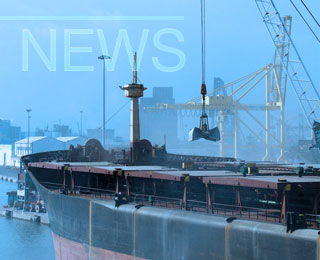Equally, Panamax indices jumped by 12% over the same period
Explanations for this sharp upturn are certainly to be found in the slow return to normal operations in Newcastle Australia after 15 days of disruption. Hunter Valley Coal Chain Logistics Team estimates that ³2.5Mt of coal export capacity was lost as a result of eastern Australia’s worst storm in 30 years². However while deliveries by rail to the port have resumed, ship loading operations may still be affected this week depending on weather conditions. HVCCLT added that ³Forecast [coal] arrivals for July of 6.9Mt suggest the [ships] queue will remain high through July before beginning to decline in August,’’.
On the Australian grain front, the weather forecasts are this time bringing some good news as the Abare expects ³the winter crop to jump by 21Mt to 37Mt² due to ³recent rain across eastern Australia² providing ³an ideal start to the season².
The Panamax index gained 643 points last week finishing at 5,998. After a week of correction, the beginning of the week was quite stable as the expectations on the market trends were not obvious.
The Panamax 4 t/c’s stabilised in the US $47,000/day region but then went up in the middle of last week as fresh requirements came on the market, quickly followed and sustained by interest for period. Gaining more than US$6,000 per day last week, the Pacific basin raised by pure speculation with no real specific demand behind it, except some interest on period thanks to strong FFA market. In the Atlantic, the market followed the same trend and was firm with plenty of requirements out of west Africa and ECSA. Panamax LME for 3/5 month with delivery Pacific marketed in the mid US$/day 40’s. Panamax LMEs for 3/5 months dely Atlantic marketed in the low US$/day 50’s level.
Following the trend of the bigger sizes in a dampened manner, the Handymax segments bottomed out and started a slight upward trend. On the Pacific RV the t/c rate went from US$39,150 to US $40,925 for Supramaxes, and from US $25,800 to US$27,200 on the Handysizes. The US Gulf to skaw t/c rate grew US$1000 to reach US$59,170 for Supramaxes, while Handysize t/c rates dropped slightly from US$36,000 to US $35,805. A 52,000 dwt built in 2004 was fixed for a 1 year t/c trip at US$39,000/ day.
The great depression is not due just yet!
Source and commentary by Barry Rogiano, salles, Shipbrokers, Paris


